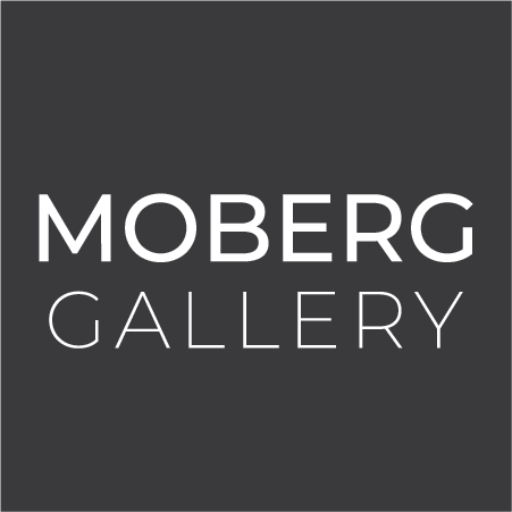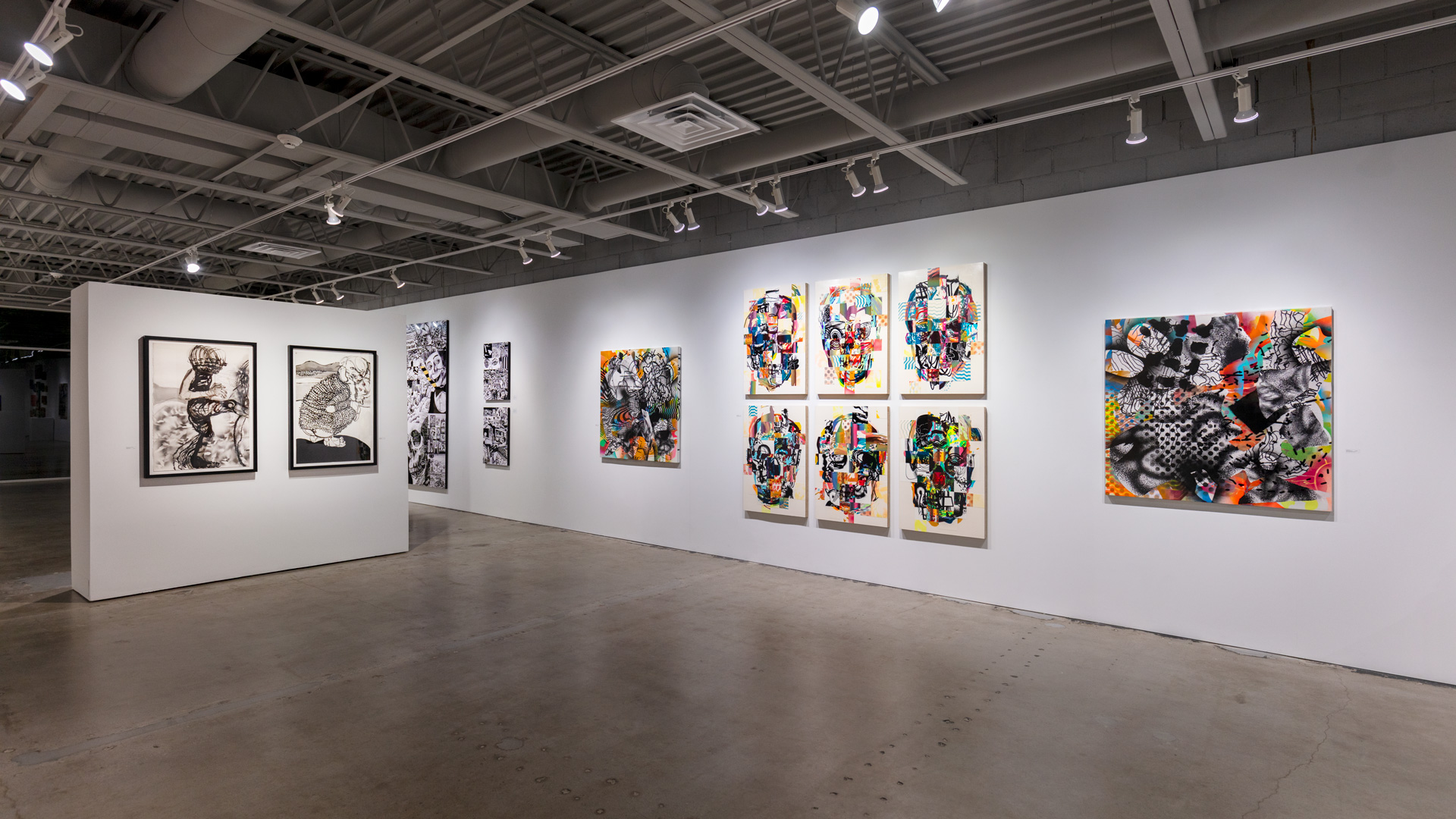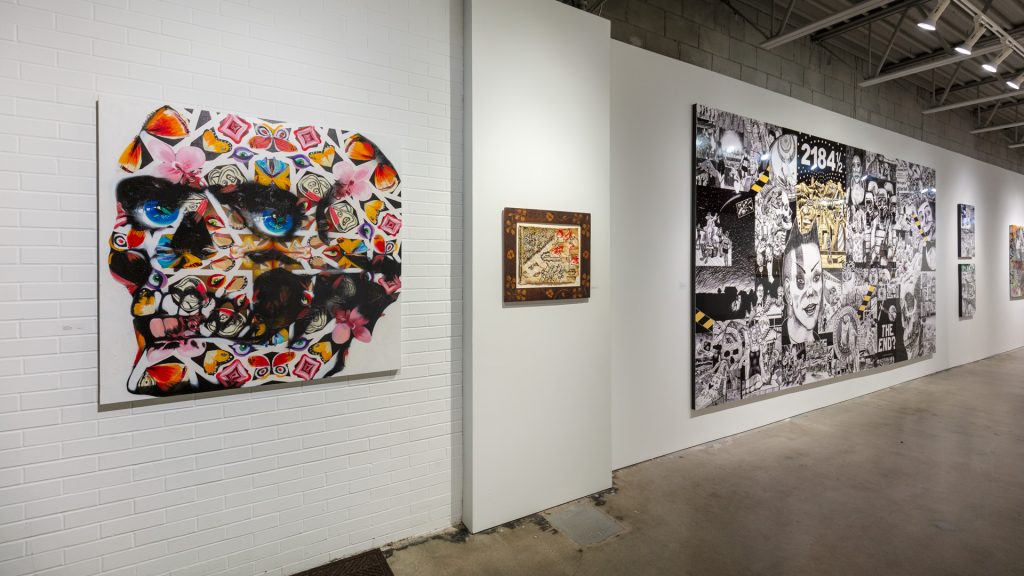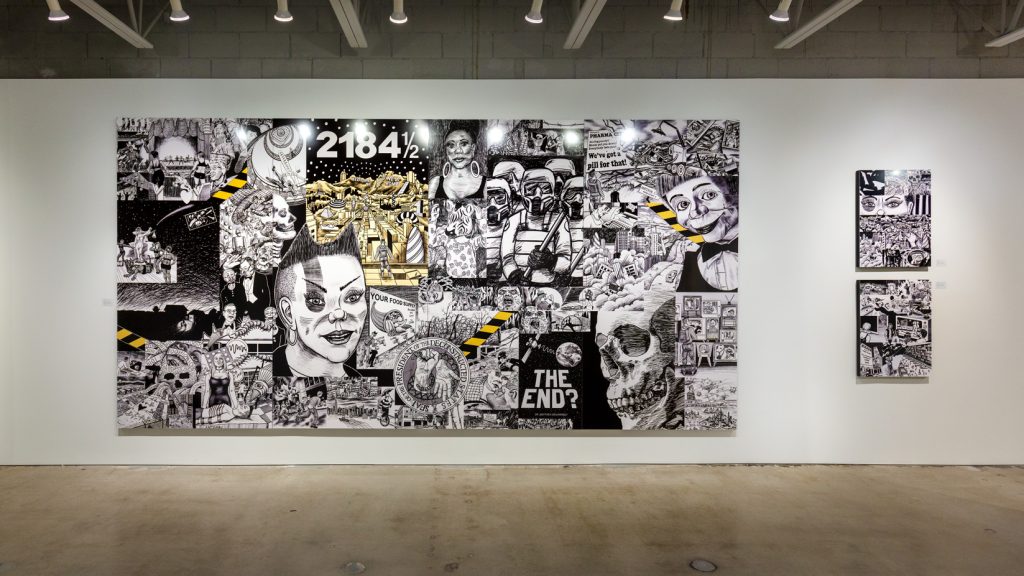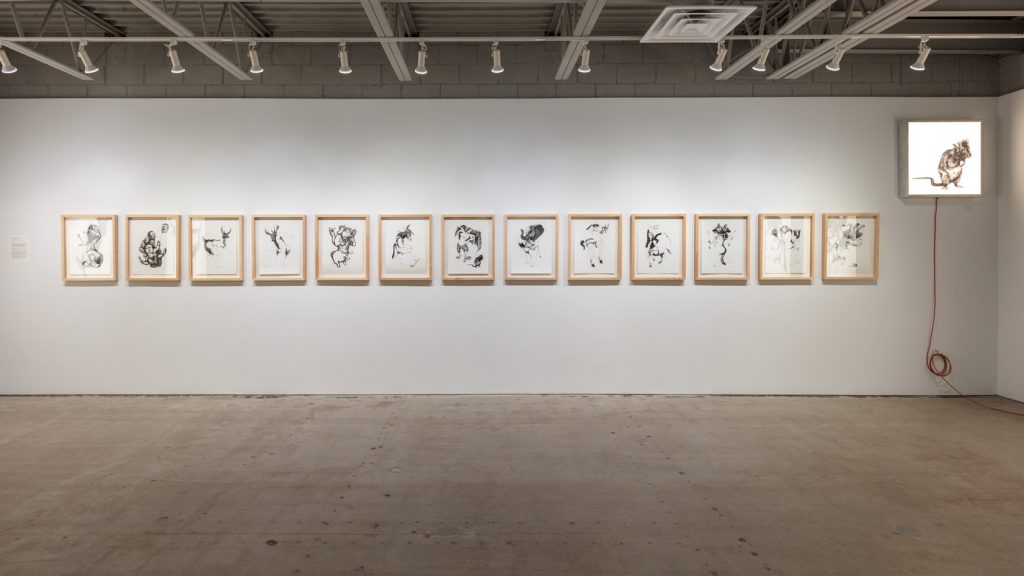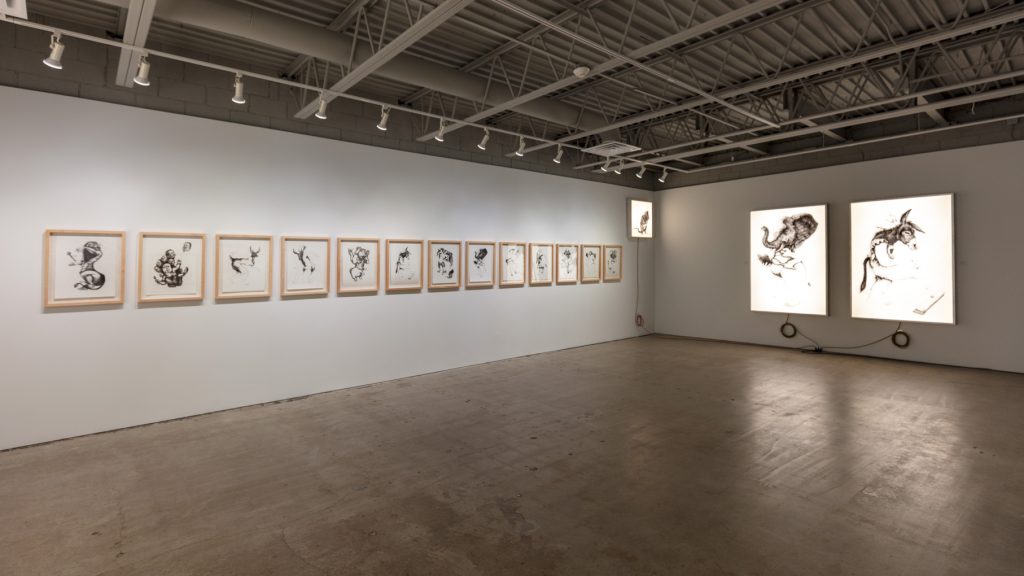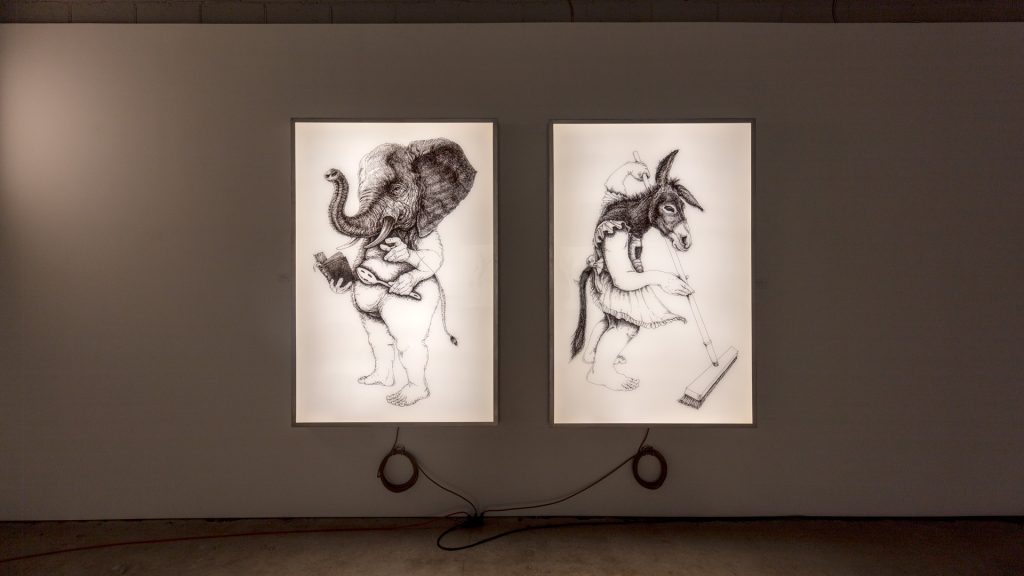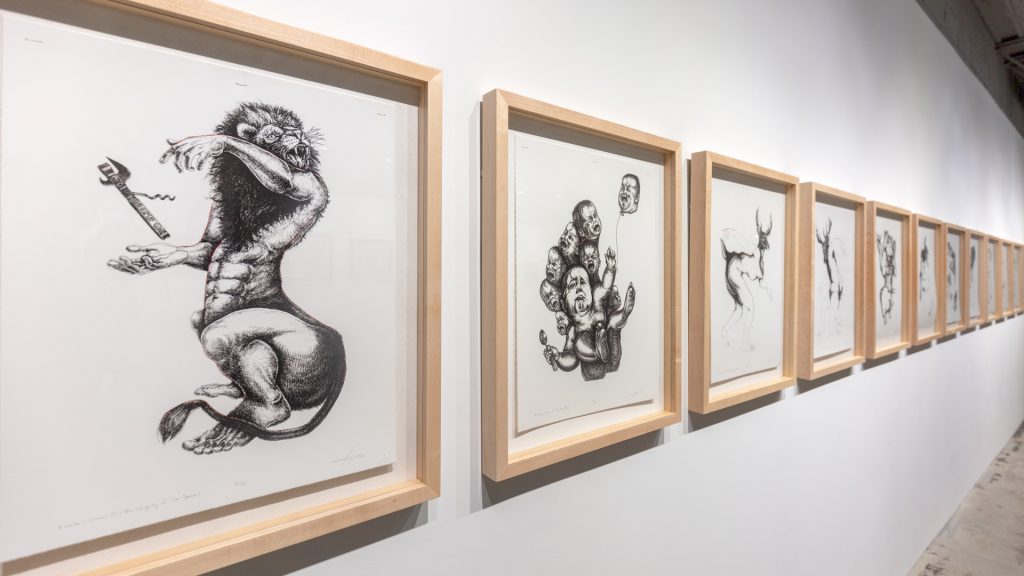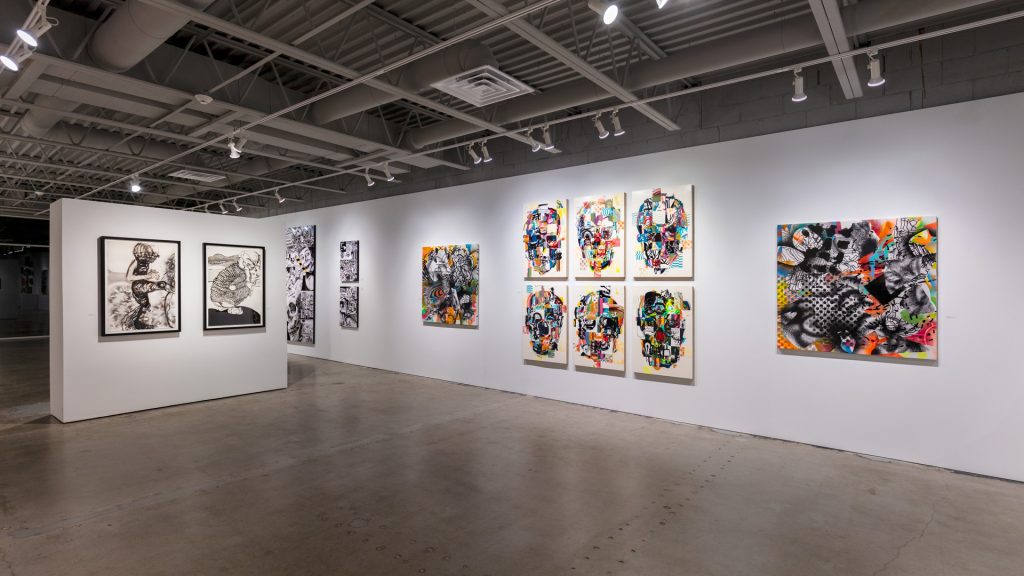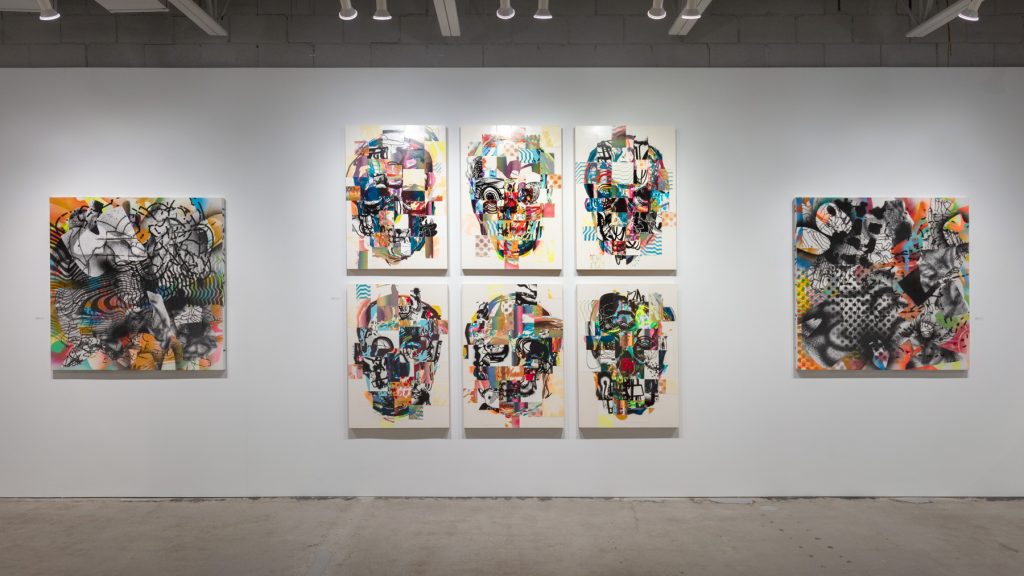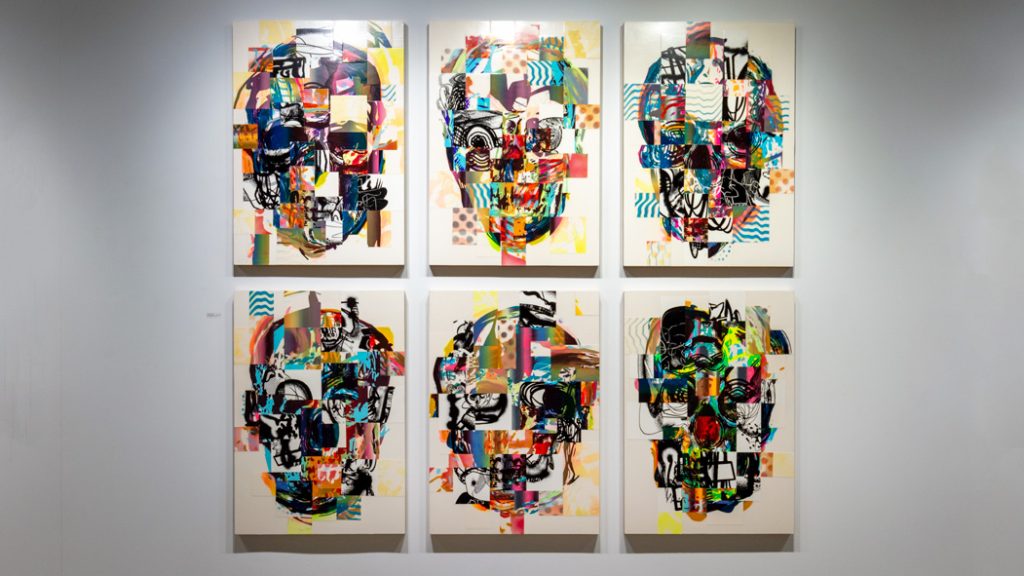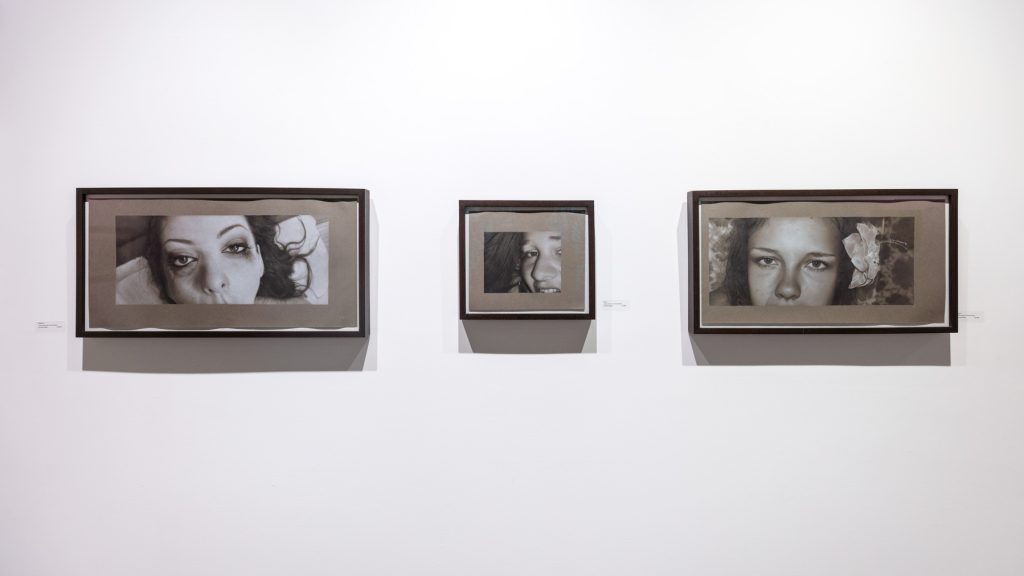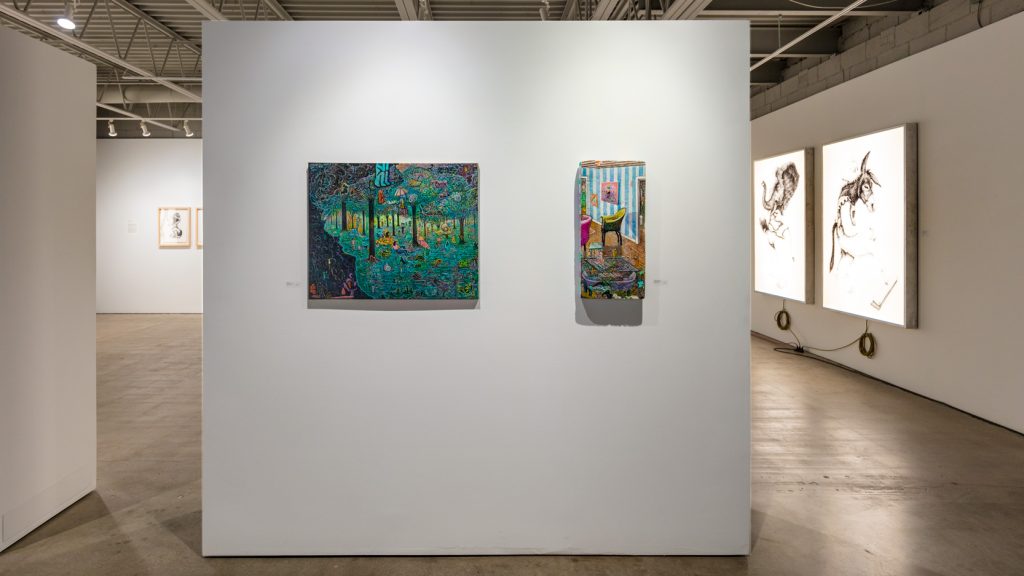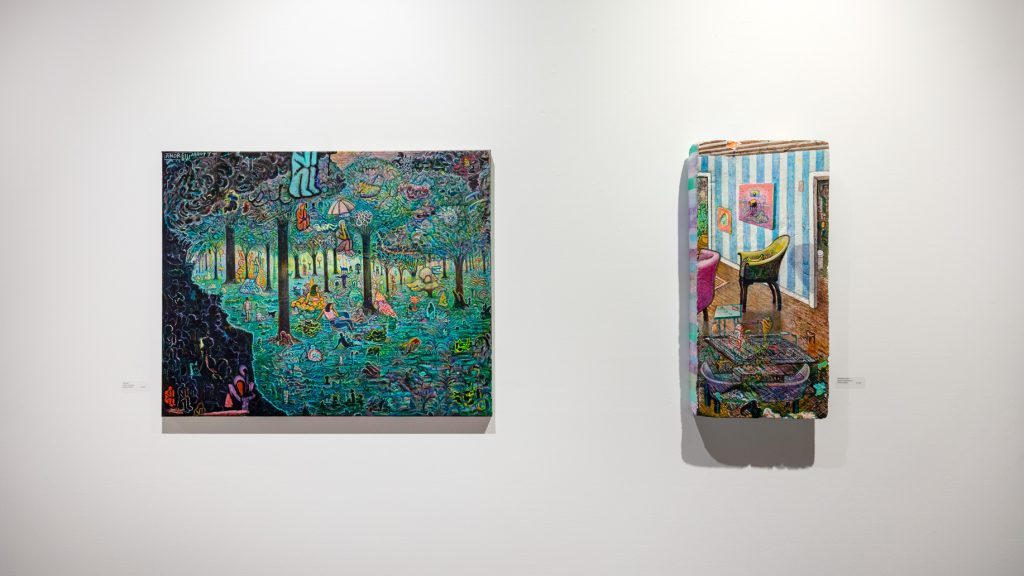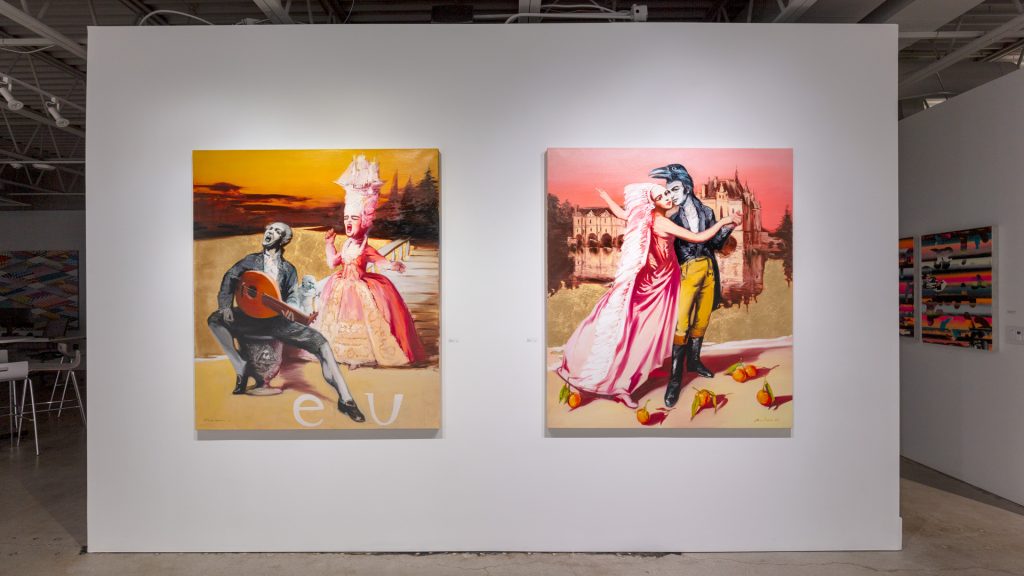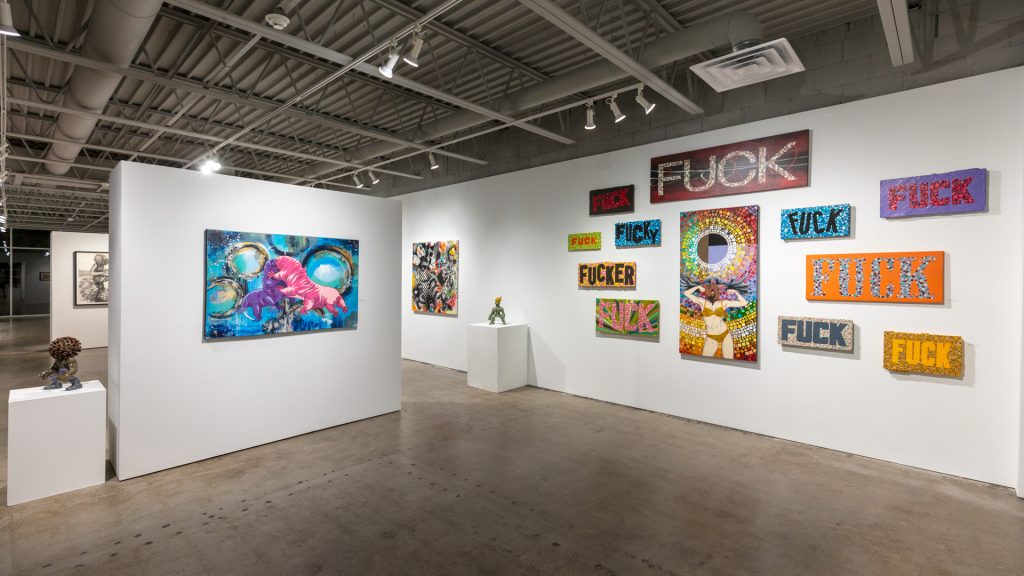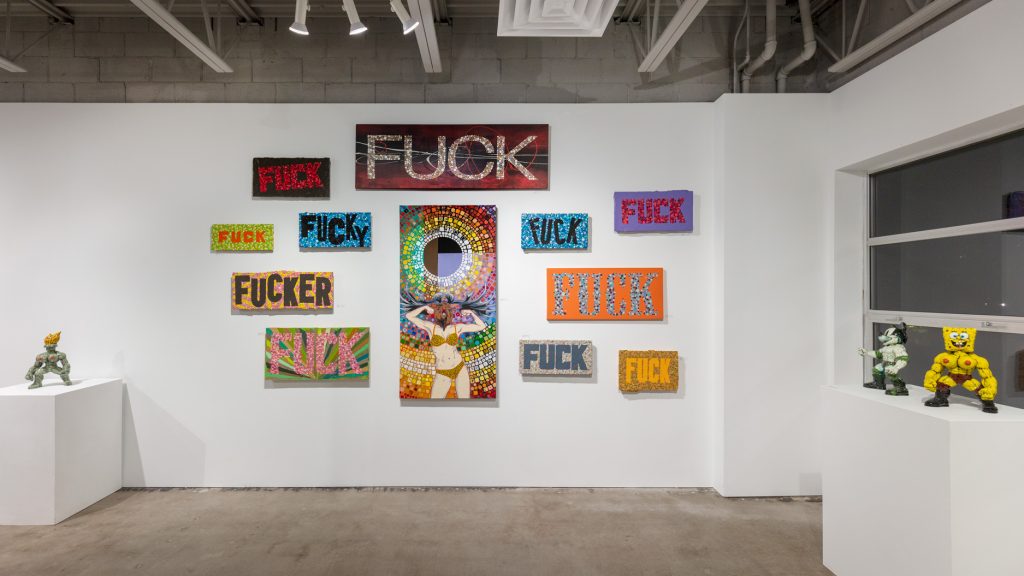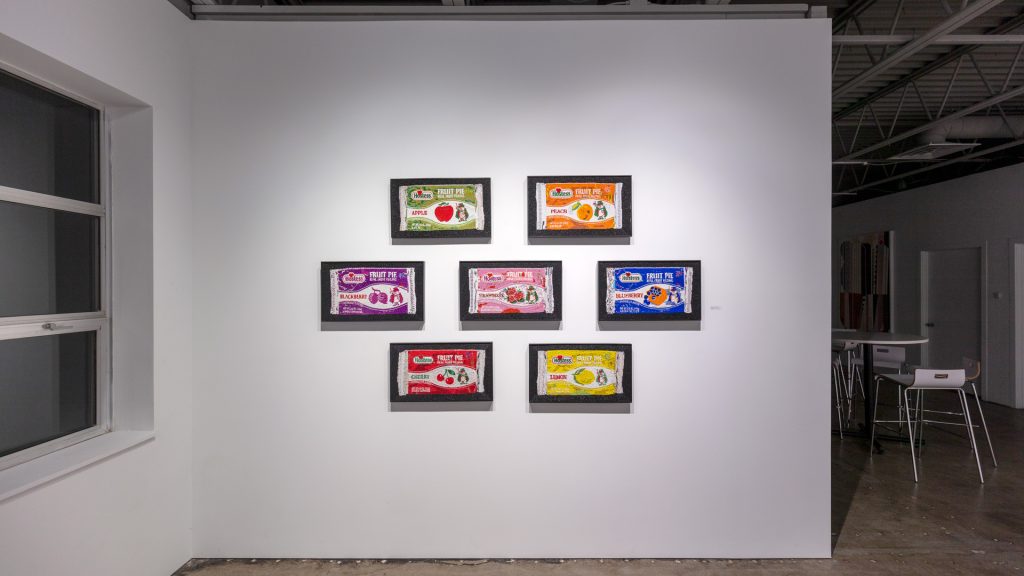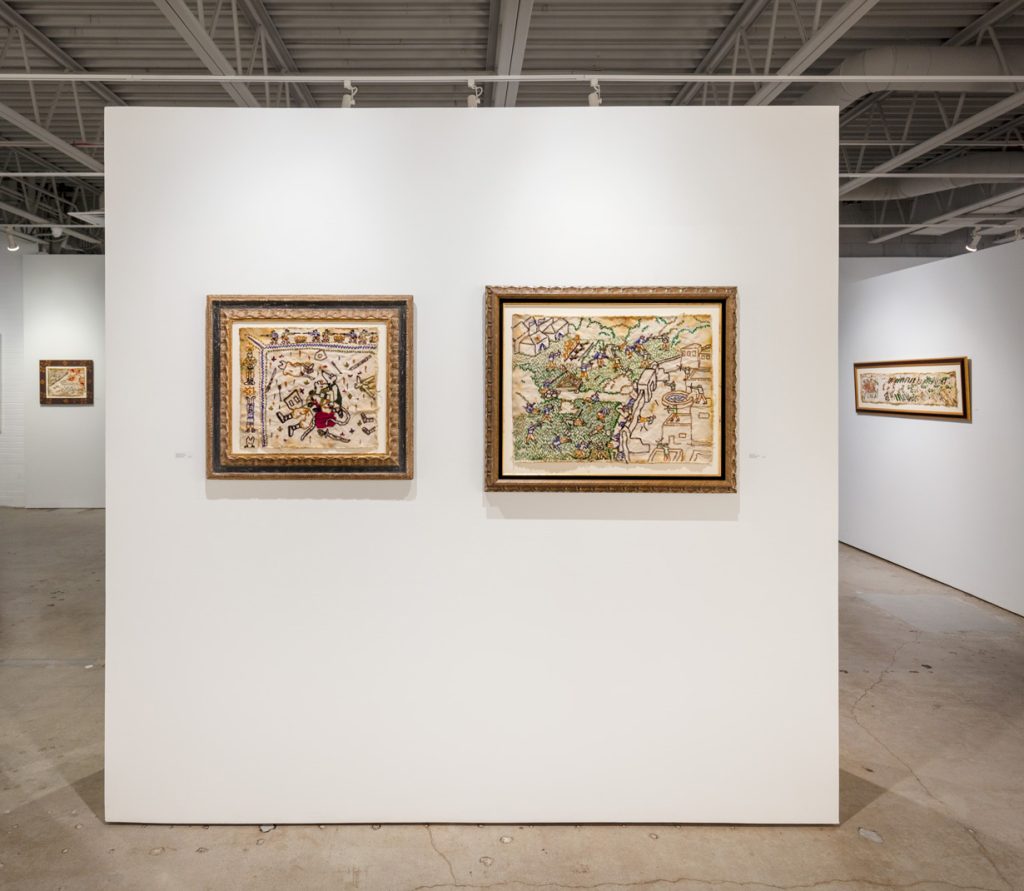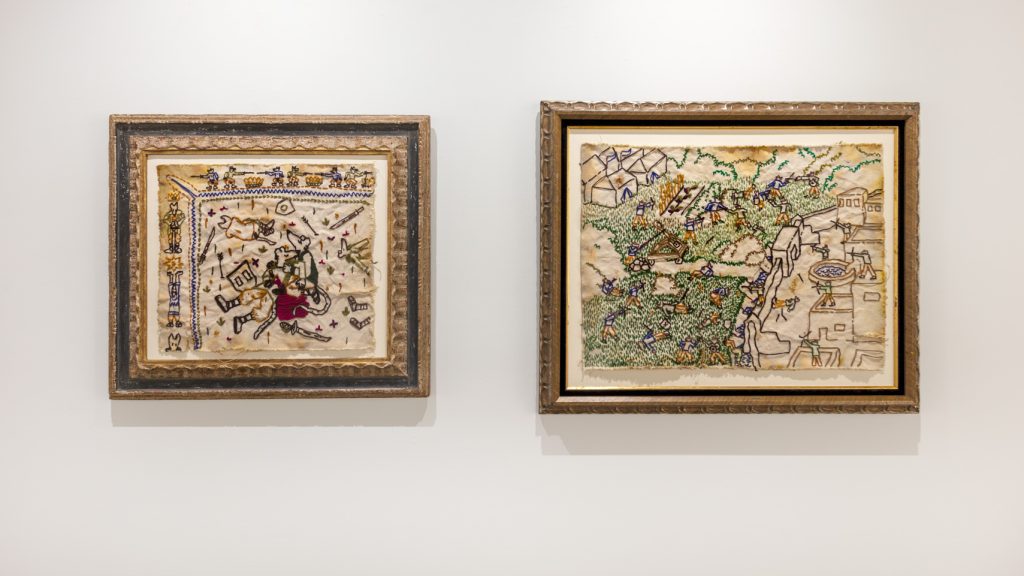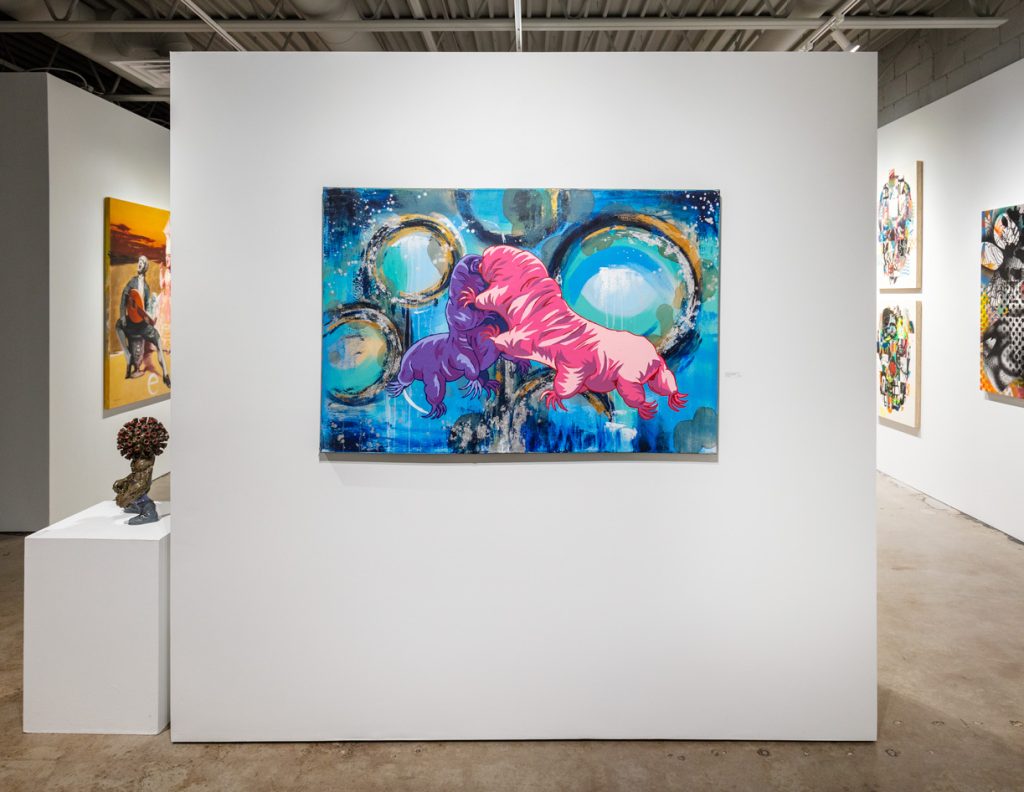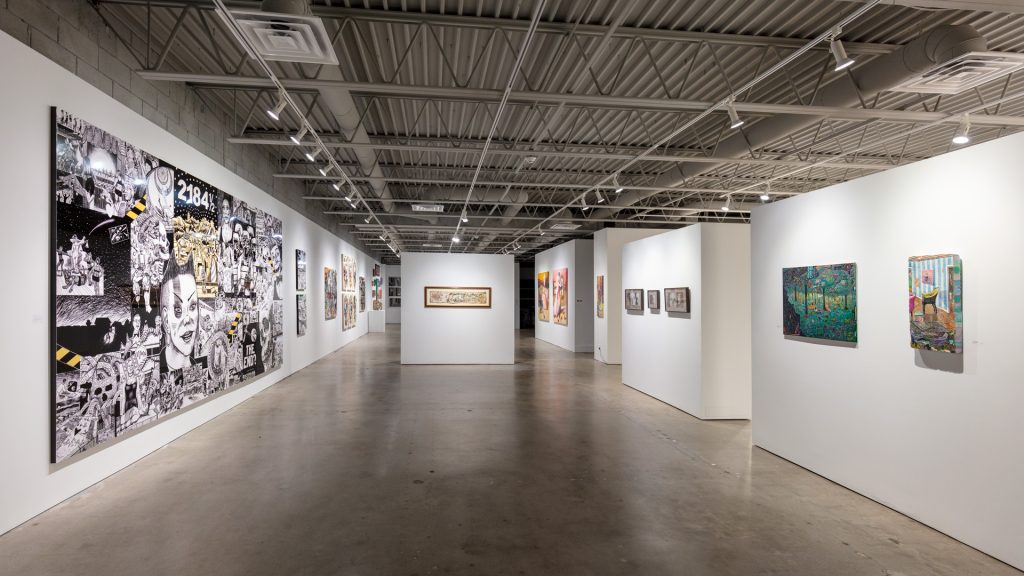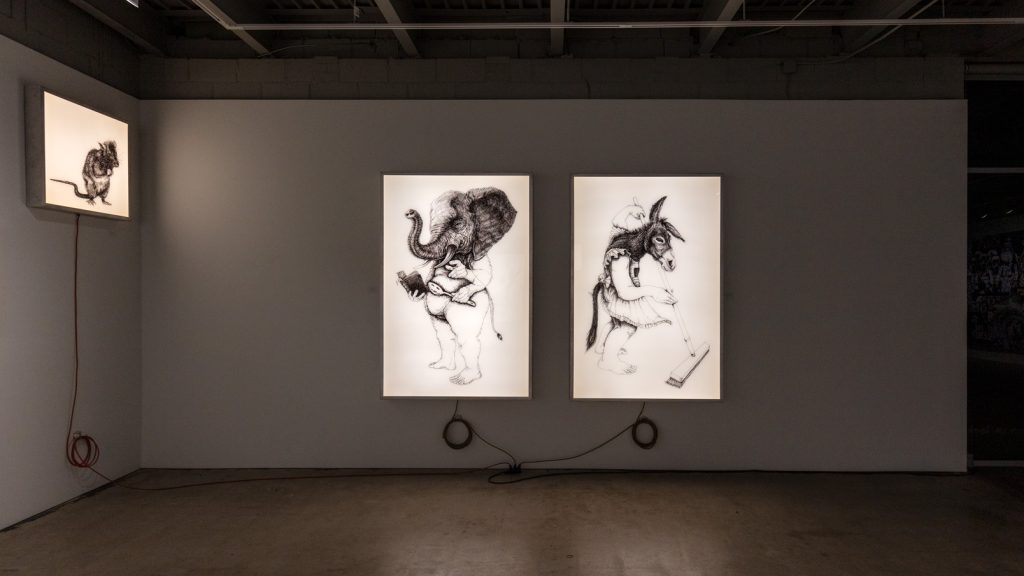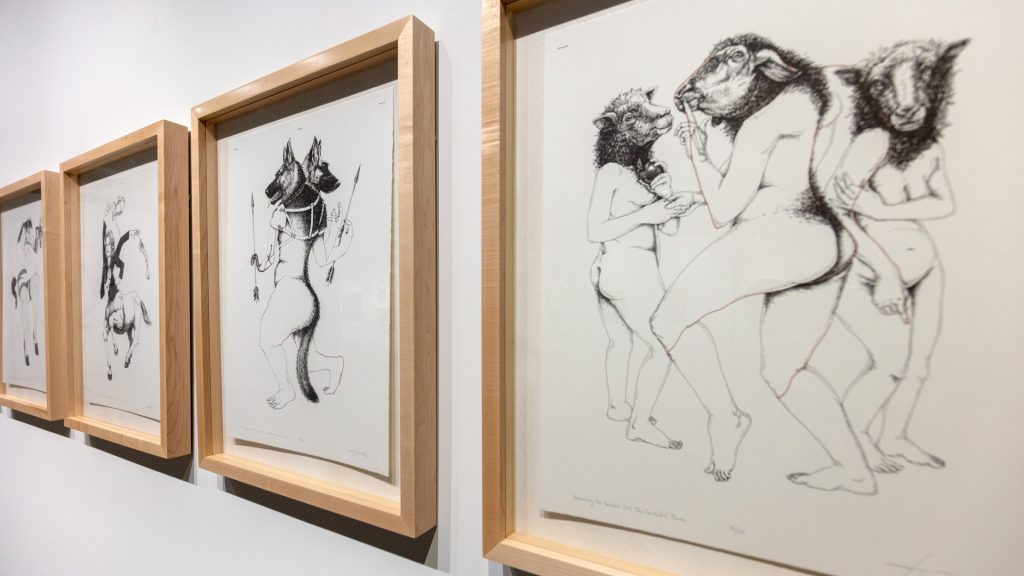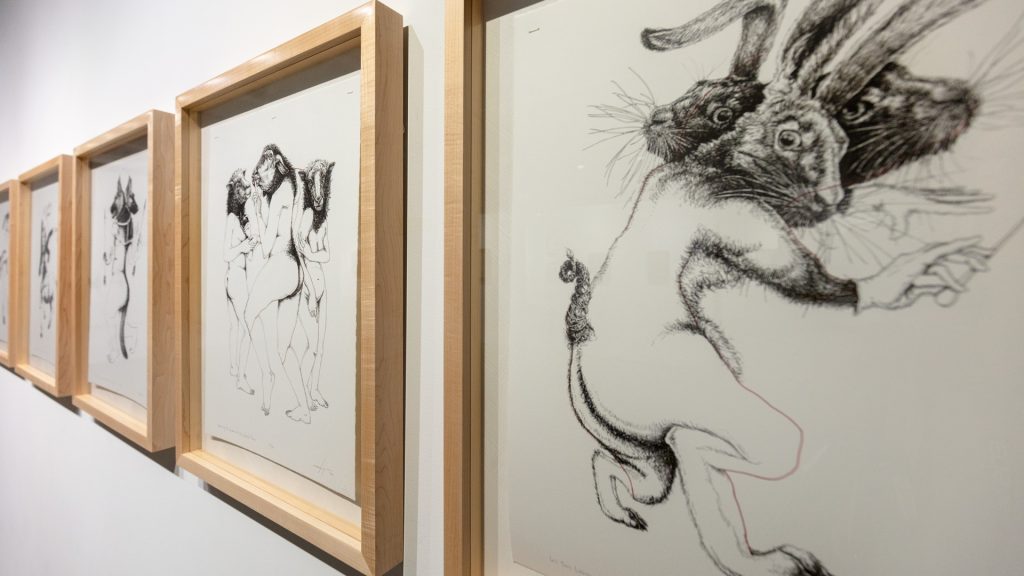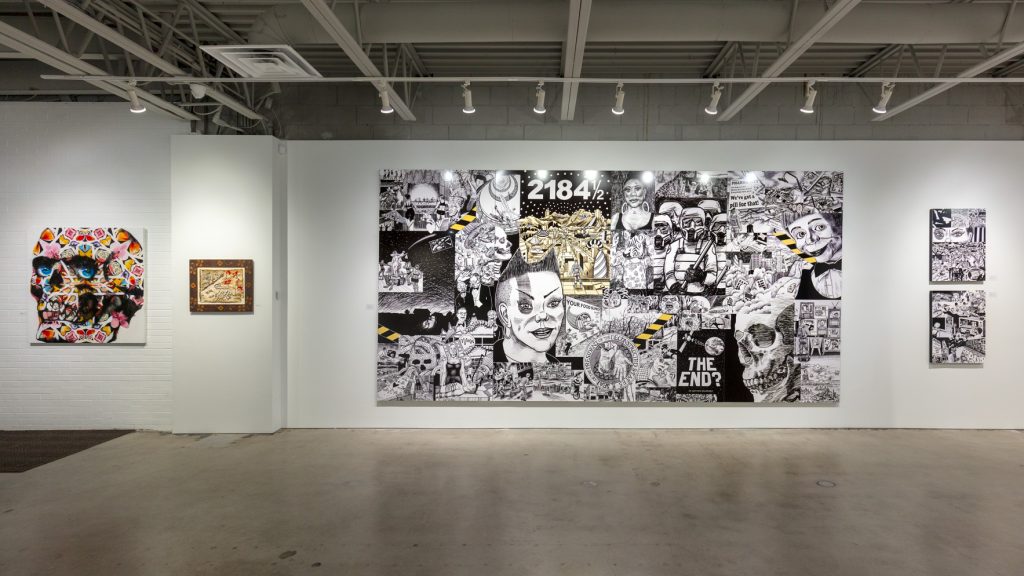TEXT BY MICHAELA MULLIN | VIEW IMAGES
This exhibit might draw a line, but it’s fine, and it finds the audience, hopefully, happily on edge with the art included. It is a feast for the eyes and mind—filled with abundant and wondrous works that will invite you to home in and expand. Join us to celebrate this Wild (Mid)West show, which includes artists from all over the globe: Andrew Abbott, Georgi Andonov, Patrick Duegaw, William Downs, Electric Coffin, Thomas C. Jackson, Mary Jones, Larassa Kabel, Alexandre Shiffer, Bart Vargas, and Aaron Wilson & Tim Dooley.
Aaron Wilson and Tim Dooley reconnected to their earliest collaborations in the making of their new series, Headspace. Reaching back to the process they used with images they felt were “culturally worn out,” they recently realized that skulls had been a part of that which hadn’t received the attention they deserved. They got the opportunity to give such attention when they were invited as visiting artists to the University of Iowa. Using the incomplete skull screen prints from their time at U of I as raw material for new collages, the Headspace series emerged. Wilson says that though “the memento mori reference is undeniable, we also have reached a time in our lives where mortality is an ever-present reality for us. It’s nice to reach a point with the motif that we are proud of, and the collage aspect of the headspace work formed the basis of the work we’ve made this last year.”
These six works are like 2-dimensional building blocks, conjuring a repeated image, each time, with difference. Like an exquisite corpse poem, which once written, gets cut up and reimagined over and over again, the space that Wilson and Dooley here create makes room for leakage, of image and idea. In Headspace 1 and 4, for instance, the blue waves offer fluid moments within a subject that feels stopped/dead. These squares of wavy lines also extend outside the edge of the perceived skull—thoughts of continuation, future, legacy, and at the same time, these same lines invoke postmarks, meaning canceled (obliterated or killed by philatelists).
Wilson also notes that the works’ surfaces are also fairly new to them. Using an acrylic medium to coat the finished pieces, they found a way to alter this glossy substance, by sanding and buffing it for a preferred satin finish for this series. VIEW WORKS
Alexandre Shiffer’s new works are part of his larger narrative of the history and empire of the Ebb creatures. His rat characters are formidable, and the various media with which Shiffer creates his artwork is impressive. These new embroidery works on canvas are aged with acrylic paint wash and their remnant-like edging piques curiosity about what else was “lost” from these works, which document historical events or daily scenes from their story. Shiffer’s attention to detail is a testament to how clearly he envisions his subject matter and the context in which his scenarios play out. “Battlefield Romance,” for instance, evokes grief and sorrow with a few stiches upon both faces of the deceased and the survived–the eyes and the tilt of the heads are so nuanced, one might actually feel sympathy for the rodents. This, coupled with the positioning of the arm of the fallen soldier, tug at strings—yarn and heart. VIEW WORKS
Bart Vargas’ new “Fuck” works delight (or offend). Using his signature dotting techniques, he’s created many of these, some with slight variations, such as “Fucky” and “Fucker,” in his all-caps block lettering. Hanging in a large grouping, these create a wall of release. Each time you look, the word is pronounced in your head, and it can act as a venting mechanism, a means to make you laugh, or implore your sensibilities to turn away. Whichever way it affects you, there is no avoiding that the “messaging” “works.”
Vargas’ sculptures, on the other hand, are more complex and their provocation of thought takes more time. “Sponge Boob Smash Pants” and “The Rona 2020” exhibit well these hybridized things/signifiers and concept/beliefs. By using iconic figures (fictitious or real), Vargas combines stereotyped or hyperbolic figures, such as bodybuilding types, and augments them with cartoon heads or oversized breasts. The covid-19 virus as head atop such a sculpted body, conjoining two things that appear powerful. Will their two parts fight to the death? Mutating power-virus and muscle-building human? Or does their cohabitation in structure lend to a more integrated system and way of thinking—do we, like mythical animals—shift? If not in external shape, then internally? VIEW WORKS
On the subject of therianthropes, the works by Patrick Duegaw are fantastical and fascinating. His statement is important to delving into the new lithograph series: “The Trials of the Golden Rat, a series of 13 lithographic editions, were derived from a child’s drawing game, Five Lines, and the epic poem The Twelve Labours of Hercules. The project is part cloud-busting, part Rorschach test, where five random marks are made on a blank page, and from these emerge[d] mythical animal-human hybrids enacting a poignant tale of ignorance, manipulation and control, intolerance, hubris, greed; and, conversely, of justice and acceptance. The original five lines in all the lithographs are printed in red, revealing the process; a common component in Duegaw’s work.
And Ksenya Gurshtein, in Updating the Myth of Hercules for the #MeToo Era (Hyperallageric, January 25, 2021), elucidates further for us: “Where is Hercules in all this? In Duegaw’s exhibition, he becomes the anti-hero: the Golden Rat with small hands — a subtle but legible allusion to Trump, who himself derided opponents using animal comparisons. Duegaw rightsizes Trump to a historical footnote surrounded by more notable characters, while the labors, including “nasty women” like Daniels, become the phenomena that shape the contemporary cultural landscape.” VIEW WORKS
Thomas C. Jackson works in watercolor, acrylic, and now has moved to digital collage on aluminum, as he celebrates his graphic novel collaboration with author Fritz McDonald, 2184 ½. These black and white pieces strike chords of doom, and even without their accompanying text, the apocalyptic vibe and under(dog)world settings are strikingly clear. (Books available at Beaverdale Books in Des Moines). VIEW WORKS
William Downs’ ink wash works on paper are haunting and mesmerizing works of motion—sketch-like lines creating imperfect boundaries of figures, creating movement of appendages and posture. Behavior and physicality are both depicted in the bleeding and building up of line. In a fevered action or positioning, body parts change shape- become elongated, shift proportion, and indicate a harrowing knowledge of humans bending, breaking, being manipulated into a state that may look ‘unattractive’ but definitely feel ‘ugly’. His figures are almost always looking out, making eye contact with the viewer/witness/implicated.
Look for Downs’ paintings in the new movie, Landscape with Invisible Hand, starring Tiffany Haddish. The storyline of this sci-fi film (adapted from M.T. Anderson’s award-winning YA novel), is that aliens invade Earth; it seems good at first, as they offer so much “assistance,” but of course, the outcome is anything but. An in-depth look at colonization through the eyes of young people—a reminder to keep teaching through art. VIEW WORKS
The three works by Larassa Kabel from her Boyfriend series, “Melanie,” “Adrian,” and “Becca,” are photorealistic drawings of photos culled and cropped from POV online pornography. Here, the female gaze counters what it would normally receive—the male gaze. Not only during oral sex but during every act, everywhere, every day. By placing the women as subject, the objectifying lens gets ground down to offer a new view. Kabel’s stilling of ethe act of fellating gives us time to pause and reflect on power dynamics and what eye contact getting made like this, with pencil, by a woman artist, says to us about our own preconceived beliefs about sex, female bodies, and their interiorities. VIEW WORKS
The collab duo, Electric Coffin, dazzle us with their pop art bead works. “Tasty Cakes” and “Bubblicious” appear Warhol-flat from a distance, but as the viewer approaches what they think they are “reading” correctly—brands or packaging that seems familiar, even nostalgic—the images come into focus, and they gleam, they are round, small on-the-verge-of 3-D works. The orange gum image reminds us of small bricks of chewing gum. And while we are remembering the flavor seeping as our jaws moved, we move so close to the work that we pretend to touch it (since we can’t). All the pretending (transporting, may be perceived as a less negative term) that goes into being with these works is a testament to the iconic subject matter and the meticulous and intricate materiality of the works themselves. Electric Coffin’s exploration of consumerism and desire continues, and it tastes so good. VIEW WORKS
Andrew Abbott’s four new smaller works are as involved and full as ever. Abbott continues to give fair play to both interior and exterior scapes, and his imaginative and innovative mind continue to beg us to look, look, keep looking, and look again. “The Glen” is an epitomic work, which feels like a dream of a landscape on the coast, which we see both linearly and aerially, simultaneously. His signature crouched figures are here, as well as some standing or in repose, more relaxed. Though their small cell phones may still be in front of their faces. This work is lush and meditative, and the bodies floating in the foliage seem that they also might be meditating transcendentally. A slightly ominous black and blue cloud swirls in the top left corner, but the roundness of the storm offers comfort, along with yellow bunnies and pink umbrellas. Abbott’s surrealist worlds are almost never frightening, even when they discomfit. VIEW WORKS
Georgi Andonov’s belief that beauty and joy should be expressed in art might seem to contradict the somewhat macabre and surreal paintings he creates. But, working with deference to the masters, he creates paintings that are strikingly contemporary, even in their ambiguous time periods. His use of color and figures prioritizes relational elements and creates fun, if not complex, spectacles for the viewer. VIEW WORKS
Mary Jones three new works impacted viewers so strongly, they sold out quickly. To view other works like these mixed media figurative works, CLICK HERE . Jones never disappoints with her smart and historically connected pieces. You will never be short on discoveries with/in her art, be it of shape, material, or background stories.
On Edge is on view through Saturday, Sept. 30.
Exhibit Images
